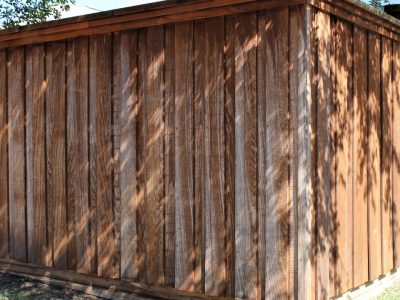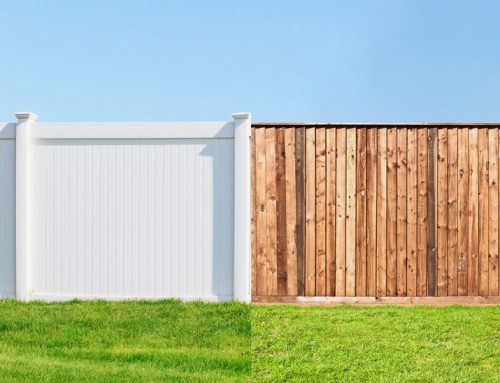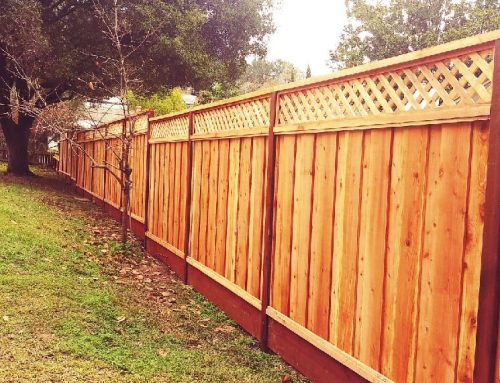When Should You Stain A New Fence? Tips And Advice
The best time to stain a new fence is 30 to 60 days after installation. This lets the wood dry and prepares it for stain. However, it depends on several factors like material, season, and weather. The dry season takes one or two weeks less time than wet or cold time.
Did you know poor timing can shorten your fence’s life by years? Keep reading to find out how to make your fence last longer. Don’t make the mistake of staining too early or too late. We’ll guide you through it.
What is the Importance of Timing?
Timing is crucial when staining a new fence. Get it right, and your fence lasts longer. It also looks better. But is it too early? The wood won’t absorb the stain well. This wastes both time and money. If you wait too long, the wood starts to degrade. This makes your fence weaker. It can also lead to costly repairs down the line. So, picking the right time to stain is not just about looks. It’s about fence health. This simple step can save you money and headaches in the long run.
What Are The Best Times To Stain A New Wooden Fence?
The best times to stain a new wooden fence are late spring and early fall. Mild weather and low humidity help the stain absorb well. Picking the right day can make or break your staining project. Keep reading to learn how to choose the perfect moment for a long-lasting, beautiful fence.
The Drying Period
Before you think about staining, focus on the drying period. New wood is often wet. This is especially true for pressure-treated wood. The wood needs to dry out before staining. Wet wood won’t take stain well. A drying period of one or two months is common. But it can vary. It depends on the type of wood and the local weather.
How do you know it’s dry? Do the water drop test. Sprinkle some water on the wood. If it absorbs quickly, it’s ready. If it beads up, wait longer. You can also use a moisture meter. This tool gives you an accurate reading. Dry wood ensures a successful staining job. It makes the fence durable and good-looking.
After Installation
After installation is one of the best times to stain a new wooden fence; this is because fresh wood surfaces are most receptive to staining at this stage. However, it’s crucial to allow the wood to acclimate to its surroundings and dry out before staining. This usually takes a few weeks to a few months, depending on the climate and type of wood.
Seasonal Considerations
Season matters when staining a new fence. Late spring and early fall are often best. Why? Temperatures are mild. Humidity is low. Both factors help the stain to set well.
Spring
Spring is an excellent time to stain a new wooden fence. The moderate temperatures and relatively low humidity levels create ideal conditions for staining.
As the weather warms up, the wood dries out from the winter moisture, making it ready to accept the stain. Additionally, spring provides a fresh start for your fence, protecting it from the upcoming summer sun and rains.
Summer
While summer offers long, sunny days, it can also be challenging for staining. High temperatures and direct sunlight can cause the stain to dry too quickly, leading to uneven application and potential lap marks.
If you choose to stain in the summer, it’s best to do it during cooler mornings or evenings when the sun is less intense. Keep in mind that the wood may be more prone to drying out during this season, so ensure it’s adequately hydrated before staining.
Fall
Fall is another excellent time for staining a wooden fence. The mild temperatures and lower humidity levels are conducive to the staining process. As the foliage falls and the yard is less cluttered, it’s easier to access the fence for staining. Staining in the fall helps protect the wood from the harsh winter weather that lies ahead.
Winter
Winter is generally not recommended for staining wooden fences. The cold temperatures and high humidity can hinder the drying and curing process of the stain.
Furthermore, it’s often challenging to work outside comfortably during the winter months. If staining can’t be avoided in winter, choose a mild day when temperatures are above freezing and humidity is relatively low.

Future Maintenance
Staining a fence is not a one-time task. For lasting beauty and strength, re-stain every 2-3 years. This keeps the wood healthy. It also maintains the fence’s look. Failing to re-stain can lead to issues. The wood may start to rot. The fence can also look worn and faded.
Signs that you need to re-stain include peeling and faded color. If you see these, it’s time for a new coat. Before re-staining, clean the fence well. Remove old, peeling stains if needed. This ensures the new stain sticks well.
Remember, weather conditions still matter. Choose a time with mild weather and low humidity, just like the first time. Regular staining keeps your fence in top shape. It also saves you money on future repairs.
Final Words
Choosing the right time to stain your fence is vital. It affects not just appearance but also durability. Aim for late spring or early fall for optimal results. Don’t forget to check moisture levels and prepare the wood.
Keep up with maintenance by re-staining every 2-3 years. Make smart timing choices and your fence will reward you with years of service and beauty.





